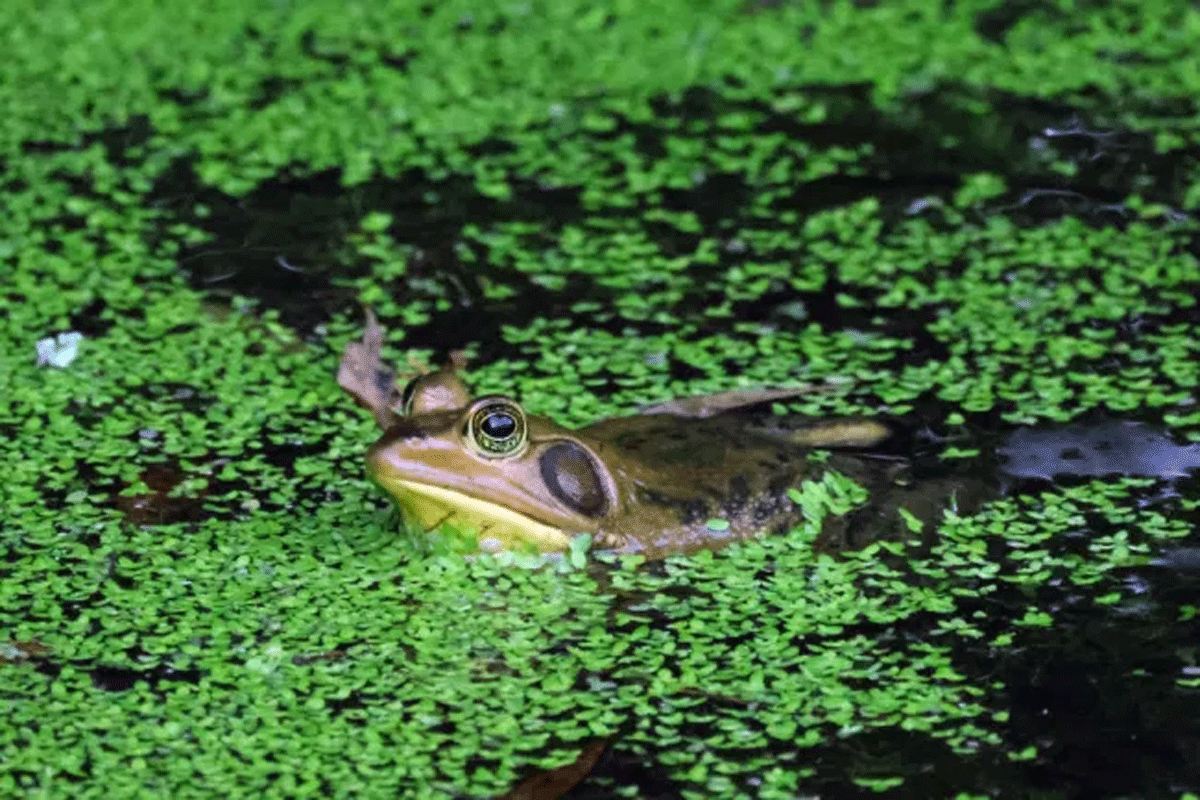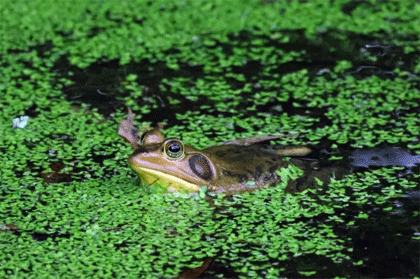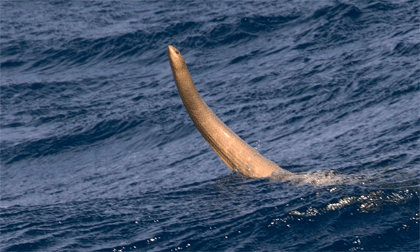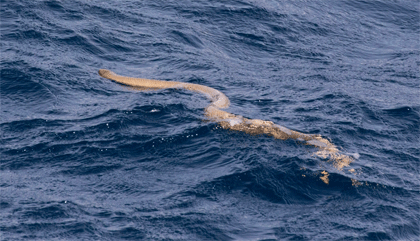
An enormous frog was found in the Solomon Islands and it’s straight up bigger than a human baby
by Grayson Weir

 A BAND of timber mill employees were hunting wild pigs on the Solomon Islands last month and stumbled across the D.K. Metcalf of frogs. Described as being the size of a human baby, mill owner Jimmy Hugo shared a photo of the frog on Facebook. It’s enormous.
A BAND of timber mill employees were hunting wild pigs on the Solomon Islands last month and stumbled across the D.K. Metcalf of frogs. Described as being the size of a human baby, mill owner Jimmy Hugo shared a photo of the frog on Facebook. It’s enormous.
Hugo refers to the capture as “bush chicken,” in reference to the Islands affinity for serving the frog as a meal, which could serve a feast for 50 people at that size. Jodi Rowley, the curator of amphibian and reptile conservation biology at the Australian Museum, told the Australian Geographic that she has never seen a frog that big.
This particular species is known as the Shortland Island webbed frog, or the giant webbed frog, and is known in scientific terms as the Cornufer Guppyi.
They are the largest aquatic frog in the Solomon Islands and Melanesia, and can grow to more than two feet. Among the largest in the entire world, if there is a frog that is bigger, I need to see it to believe it.
The enormous amphibians are toward the top of the food chain, and firmly hold the top spot for frogs in the region. Despite their predatory ways, the Cornufer Guppyis are facing extinction dead in the face as habitat loss, decreased water quality and pollution threaten their existence. Thus, they are rarely seen anymore.
Large venomous snake emerges from sea in ‘surreal’ encounter
 Pete Thomas
Pete Thomas
A wildlife photographer this week shared a “super rare” photo showing a large sea snake breaching nearly clear of the surface at the Great Barrier Reef in the Coral Sea.
The eye-catching image caused some of Rachelle Mackintosh’s Instagram followers to look twice while trying to figure out precisely what they were seeing.
But Mackintosh assured in her description that it was an olive sea snake, a venomous reef predator that typically remains hidden by day, breaking the surface in what seemed a bizarre behavior.
 Olive sea snake swimming. Photo: Rachelle Mackintosh
Olive sea snake swimming. Photo: Rachelle Mackintosh
Mackintosh, from Sydney, Australia, told For The Win Outdoors that she captured the image in June 2017. The snake measured 6-plus feet.
ALSO ON FTW OUTDOORS: Man knocked overboard by lunge-feeding whale; video
She had been on a multi-day diving expedition at Ribbon Reefs, a remote section of the Great Barrier Reef known for its marine diversity and pristine waters, “to spend a few days swimming with dwarf minke whales.”
“One of the coolest things about them is that their vocalizations sound like Jedi light sabres in action,” Mackintosh joked. “They’re also very friendly and will hang out around the boat for hours on end.”
But for several moments, the olive sea snake stole the spotlight.
“The snake seemed to appear from nowhere and swam on the surface for a couple of seconds, when suddenly it started doing this weird little move where it would slightly lift its head, like it was looking for something,” Mackintosh recalled. “Then it did this full kind of lift out of the water and then splashed down and disappeared again.
“It was super surreal – and one of the coolest things I’ve ever seen.”
Mackintosh said she was told by a researcher that the snake might have been trying to escape predation by sharks, or merely inspecting its surroundings, or simply engaging in playful behavior.
Olive sea snakes are common along Australia’s northern coast and among the reef systems that comprise the Great Barrier Reef. They must surface to breathe but can remain submerged for up to two hours.
They typically hunt small fish and crustaceans, primarily at night, and hide in the reefs during the day.
While the sea snakes are not aggressive toward humans, they will bite if threatened or harassed, and bites can be fatal.
–Images courtesy of Rachelle Mackintosh
USAToday.com
Scientists create human monkey embryo and now Planet of the Apes is haunting us all
Harriet Brewis
1 day ago
Science and Tech
The first human-monkey embryos have been created and kept alive for up to 20 days – and people are concerned.
The hybrids were made by injecting human stem cells into macaque embryos in a US lab, creating what is known as a chimera.
Researchers from the Salk Institute in California said their work, which was published in the journal Cell, aimed to understand more about early human development.
However, a number of ethicists in the UK have warned that this type of work “poses significant ethical and legal challenges” and “opens Pandora’s box to human-nonhuman chimeras”.
Meanwhile, all social media users can think about is Planet of the Apes.
 Planet of the Apes | indy100
Planet of the Apes | indy100
content
Indy100.com



















